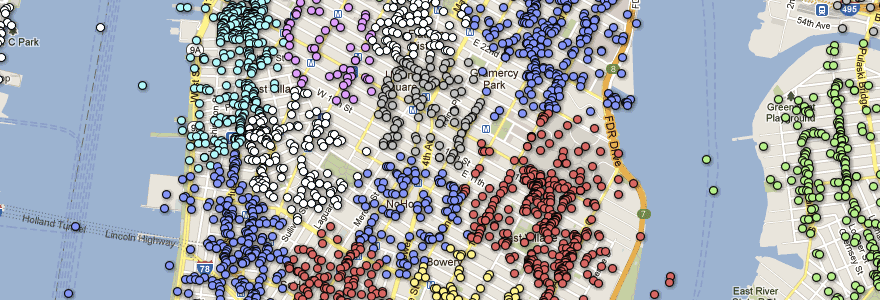

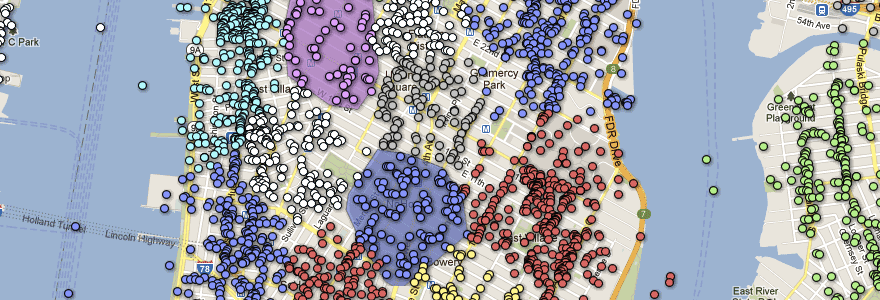
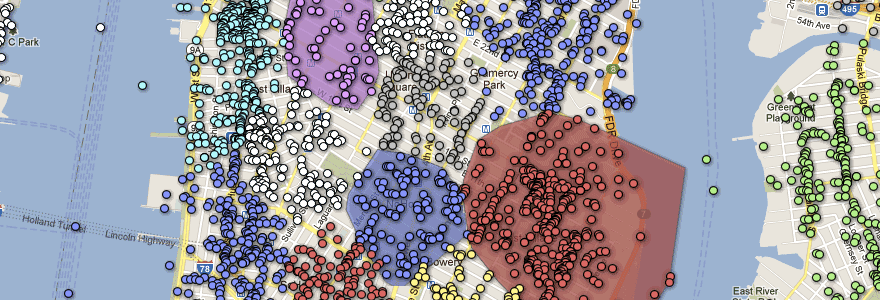
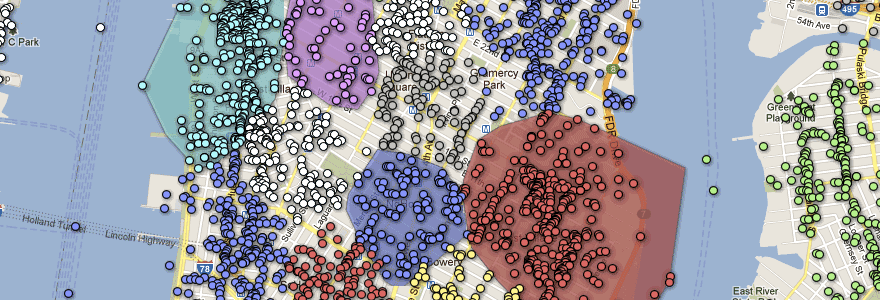
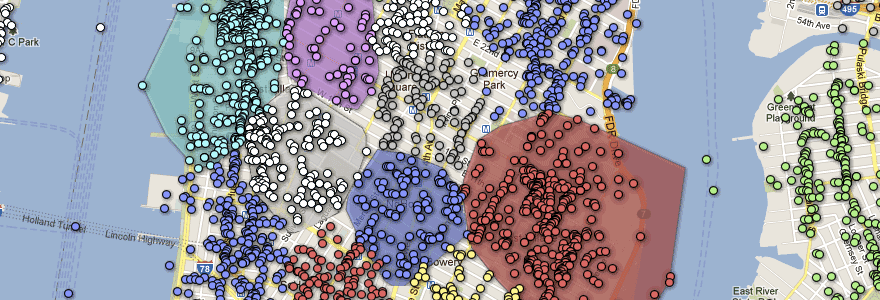
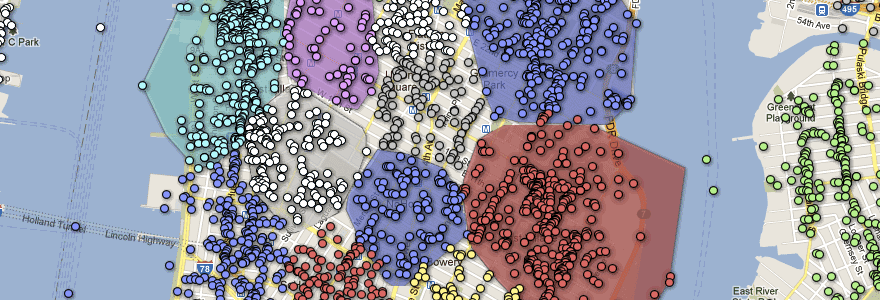
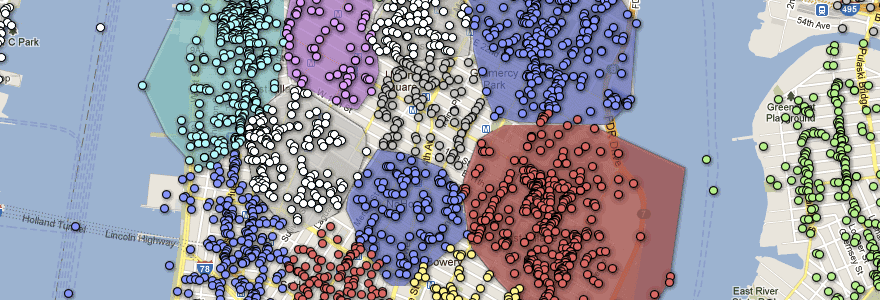
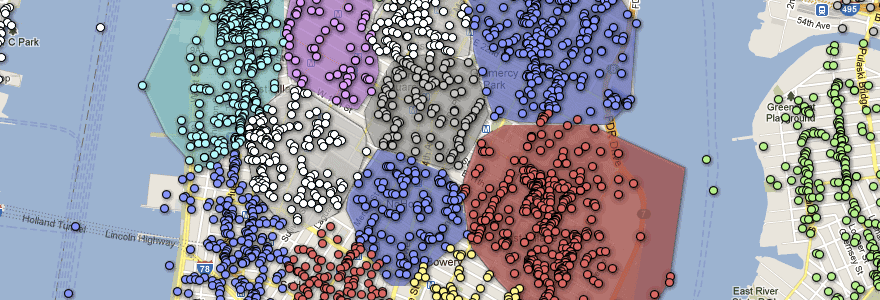
By analyzing location check-in patterns throughout a city, we discover its hidden structure. Our techniques produce dynamic neighborhood maps, reflecting the every-day experiences of real people.
Read the Paper
Carnegie Mellon computer scientists are putting a new spin on the study of cities.
Read More
A team of researchers analyzed the clusters of places that like-minded people flock to.
Read More
Livehoods is taking a big swing at mining insights into cultural habits and how societies flow.
Read MoreBy looking at people's checkin patterns at places across the city, we create a mapping of the different dynamic areas that comprise it. Each Livehood tells a different story of the people and places that shape it.
Livehoods allow us to investigate and explore how people actually use the city, simultaneosly shedding light onto the factors that come together to shape the urban landscape and the social texture of city life, including municipal borders, demographics, economic development, resources, geography, and planning.
The hypothesis underlying our work is that the character of an urban area is defined not just by the the types of places found there, but also by the people who make the area part of their daily routine. To explore this hypothesis, given data from over 18 million foursquare check-ins, we introduce a model that groups nearby venues into areas based on patterns in the set of people who check-in to them. By examining patterns in these check-ins, we can learn about the different areas that comprise the city, allowing us to study the social dynamics, structure, and character of cities on a large scale.